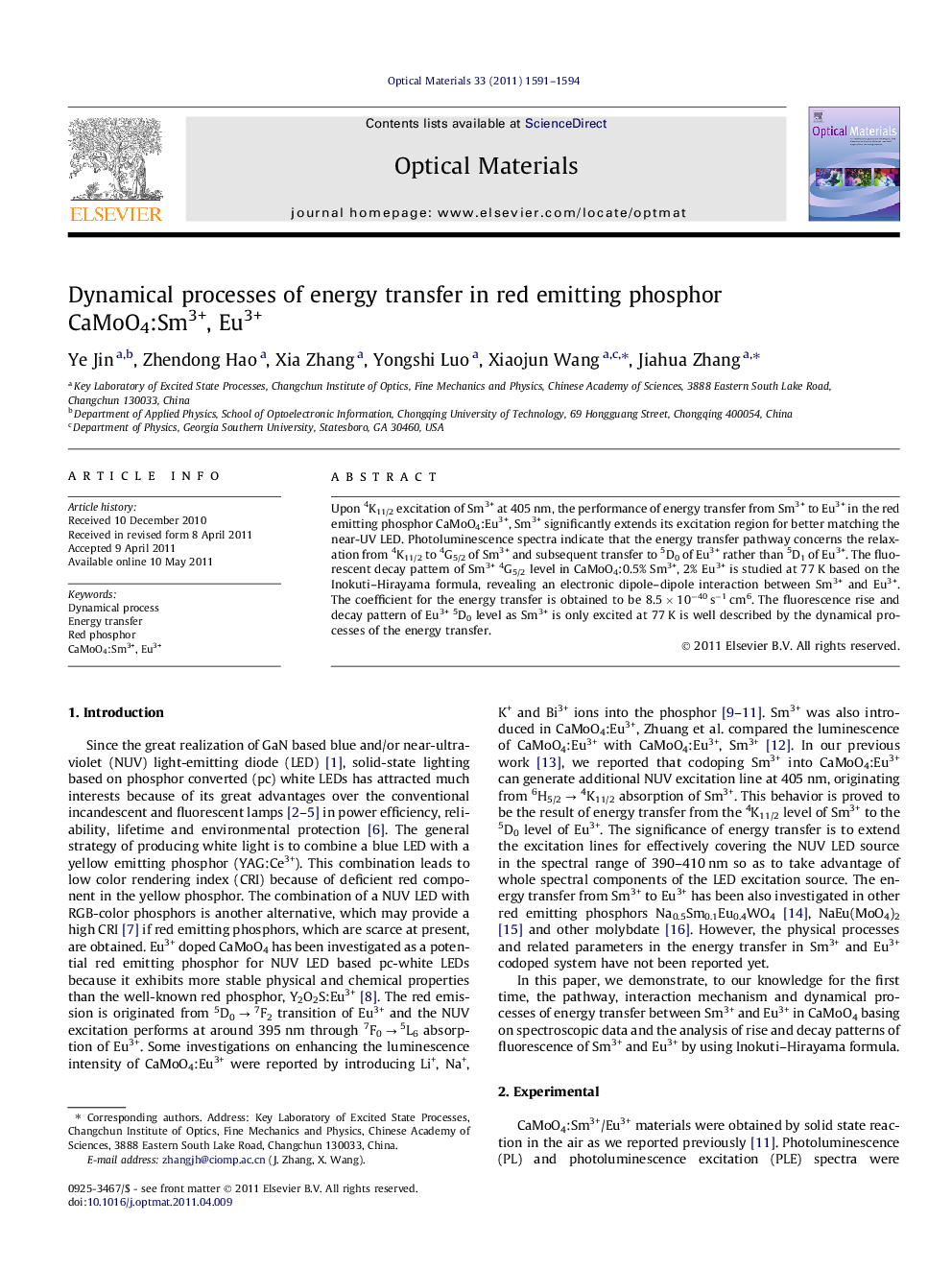| Article ID | Journal | Published Year | Pages | File Type |
|---|---|---|---|---|
| 1495283 | Optical Materials | 2011 | 4 Pages |
Upon 4K11/2 excitation of Sm3+ at 405 nm, the performance of energy transfer from Sm3+ to Eu3+ in the red emitting phosphor CaMoO4:Eu3+, Sm3+ significantly extends its excitation region for better matching the near-UV LED. Photoluminescence spectra indicate that the energy transfer pathway concerns the relaxation from 4K11/2 to 4G5/2 of Sm3+ and subsequent transfer to 5D0 of Eu3+ rather than 5D1 of Eu3+. The fluorescent decay pattern of Sm3+4G5/2 level in CaMoO4:0.5% Sm3+, 2% Eu3+ is studied at 77 K based on the Inokuti–Hirayama formula, revealing an electronic dipole–dipole interaction between Sm3+ and Eu3+. The coefficient for the energy transfer is obtained to be 8.5 × 10−40 s−1 cm6. The fluorescence rise and decay pattern of Eu3+5D0 level as Sm3+ is only excited at 77 K is well described by the dynamical processes of the energy transfer.
► The introduction of Sm3+ to CaMoO4:Eu3+ extends its absorption region for near-UV LED. ► The energy transfer pathway is from 4G5/2 of Sm3+ to 5D0 rather than 5D1 of Eu3+. ► The decay pattern of Sm3+4G5/2 level is studied at 77 K based on the I–H formula. ► An electronic dipole–dipole interaction between Sm3+ and Eu3+ is convinced. ► The coefficient for the energy transfer is obtained to be 8.5 × 10−40 s−1 cm6.
